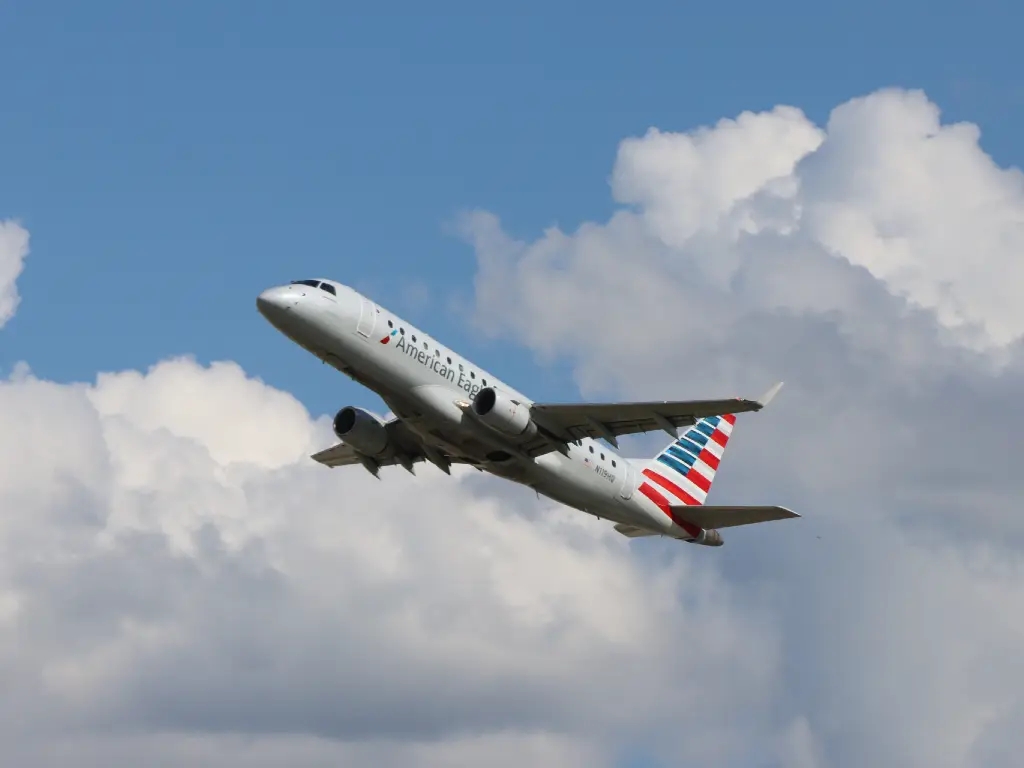
The Pros and Cons of Airline Co-Branded Credit Cards
Table of Contents
Going has partnered with CardRatings for our coverage of credit card products. Going and CardRatings may receive a commission from card issuers. Opinions, reviews, analyses, and recommendations are the author's alone, and have not been reviewed, endorsed, or approved by any of these entities. Some of all of the card offers that appear on this page are from advertisers; compensation may affect how and where the cards appear on the site; and Going does not include all card companies are all available card offers.
Airline co-branded credit cards are nothing new—they appeared in the late 1980s, just a few years after the first airline loyalty programs were established. In the four decades since (yes, the 1980s are now four decades away!), most major airlines, including United, Southwest, and American Airlines, have partnered with banks to help customers maximize their point-earning opportunities.
While it may seem like an easy win to earn miles on credit card purchases you’d make anyway, it’s still a good idea to understand what you’re getting into before signing up for an airline co-branded credit card. That means examining your travel habits and most frequently used airlines, navigating the complex loyalty and points systems, and figuring out which airline perks are most useful to you. As great as airline co-branded credit cards can be for frequent travelers, their limited scope of reward redemption means they aren’t right for everyone.
Let’s look a little closer.
Benefits of airline co-branded credit cards
For frequent travelers, airline co-branded credit cards come with a number of enticing perks. While each card offer is slightly different, most offer some version of the following benefits.
Intro offers
To seduce new users, many credit cards come with intro offers. Promotions vary, but most come with a hefty chunk of bonus miles when you spend a certain amount in your first months of using the card.
For context, you’d typically have to spend anywhere from $12,500 to $50,000 to earn 50,000 miles, so these bonuses can help you get ahead of the game. Since roundtrip flights often cost around 7,500-40,000 miles, meeting the terms of an intro offer may just mean there’s a free flight in your future….
As you can see, the offers vary a lot depending on the airline, the bank partner, the type of card, and more. If you usually spend a few thousand dollars a month on credit cards and are looking to take a free or heavily discounted flight in the near future, this may be worth your while. It’s also a good idea to shop around to find the best intro offers—some airline co-branded cards run several promotions at once, so look for the one that suits you best.
Miles
Most credit cards these days offer rewards of some kind or another, and for airline co-branded credit cards, those usually come in mile form. Keep in mind that the value of a mile varies depending on the airline but typically falls around 1 cent per mile. That means if you earn one mile for each dollar you spend on a $1,000 dollar purchase, your miles might be worth just $10 in-flight credit–not enough to get you in the air for free any time soon!
Once you’ve racked up enough miles, you can use them as currency to partially or fully cover the cost of a flight. Some airline co-branded cards also allow you to spend miles on other purchases. For example, United offers customers the opportunity to pay for meals with miles in the United terminals of both the Newark and Houston airports.
Free checked bags
We’ve all been sucked into a ridiculously low airfare at some point, only to see that the price doesn’t include baggage…
That’s why one of the most valuable perks of airline co-branded credit cards is the inclusion of free checked baggage, for you and your party. Most airline co-branded credit cards offer this—everyone from Alaska Airlines to American, Delta, JetBlue, Hawaiian, and United. Since your first piece of checked luggage can run you anywhere from $30-$60 or more, this can save you a chunk of change on each leg of your journey.
Companion passes
While not particularly helpful for solo travelers, many credit cards offer companion fares, meaning discounted prices for flight tickets if you travel with someone else. This sometimes comes at a cost (Alaska Airlines requires credit card spending of at least $6,000 in the previous year for this perk) and they can be difficult to to redeem (you’ll often have to book the most expensive fare class, for example) but when you can use them, they can mean pretty good savings.
Lounge access
Priority boarding
Sure, there’s that whole debate among travelers about whether it’s best to board the plane first or last. No matter which side of the debate you fall on, it’s worth noting that many airline co-branded credit cards come with priority boarding, so even if you’re adamant about being the last customer to step foot on the plane, you also have the option not to be.
Keep in mind this doesn’t necessarily mean you’ll be the first to get on—on Alaska Airlines, cardholders board in the third boarding group of six; on American Airlines, it’s the fourth of nine; and on United Airlines, cardholders board in the second group of six. This perk is most valuable when flying with Southwest, which doesn’t assign seats but lets customers choose based on their boarding groups. Southwest® Rapid Rewards® Performance Business Credit Card members get upgraded to the A1-A15 boarding positions up to four times a year, ideal when you’re traveling in a group or want to make sure you snag that window seat and avoid stowing your carry-on several rows away.
Drawbacks of airline co-branded credit cards
There are, of course, some drawbacks to airline co-branded credit cards that may affect your decision to open one.
Limited rewards
Unlike other credit cards, which offer multiple ways to redeem rewards, airline co-branded credit card rewards are fairly limited. First of all, the miles you rack up are only valid for the airline in question (or, in some cases, partner airlines). So if the best flights from your airport are on American Airlines, but you only have a United Airlines credit card, you probably won’t get to put those miles to good use. Same deal if you aren’t planning any trips for the year.
Some airline credit cards are more flexible, allowing you to spend miles on things like hotel bookings, flights with partner airlines, and car rental reservations. Even so, you have to redeem those rewards through the airline’s website (meaning say goodbye to your favorite third-party booking site), and miles may not always be redeemable for the flight route you’re looking into.
Lower earnings on everyday purchases
Unless you travel every month, it’s likely that the majority of your purchases on your airline co-branded credit card will not be for flights or other airline-affiliated bookings. Since you usually get the highest miles-to-dollar ratio on airline purchases, that means you won’t be maximizing your rewards most of the time.
The value of miles changes over time
Mile devaluation is a real thing! Maybe when you started earning miles, you could book a roundtrip flight with just a few thousand miles, but by the time you’re ready to cash in your rewards, a roundtrip flight costs tens of thousands of miles. Airlines can change their policies at the drop of a hat without notifying customers in advance, causing your accumulated rewards to lose their worth. Miles with some airlines can also expire if your account doesn’t have activity within a certain amount of time.
They’re not great if you use multiple airlines
Getting an airline co-branded card is great if you’re particularly loyal to one airline, but what if you like to share the love and fly United one trip and JetBlue the next? Maybe you have the credit card of an airline that only flies domestically when you’re hoping to use miles on an international flight, or you’ve opened so many different airline co-branded credit cards that you never end up accumulating enough miles on any one of them. To make the most of an airline co-branded credit card, you’ll have to be a loyal customer, which may not align with your travel plans.
Do the math to see if the card pays for itself year to year. How many roundtrips do you need to take with this airline for the savings on bag fees and other ancillary expenses to offset the annual fee?
High annual fees
While only about 15% of all credit cards charge an annual fee, the majority of airline co-branded credit cards are among them. That fee typically falls around $75-$95 and may go up into the multiple hundreds for higher-tier cards. If you’re using the card frequently and taking advantage of its benefits, the annual fee might pay for itself, but if not? That’s money out the window.
So, should you get an airline credit card?
An airline credit card might be for you if you:
- Are loyal to one airline.
- Plan on making the most of the rewards.
- Often buy basic economy tickets and need the free baggage.
- Care about priority boarding.
- Make frequent airline purchases.
Air airline credit card might not be for you if you:
- Aren’t a frequent traveler.
- Use multiple airlines.
- Do the majority of your spending on other cards.
- Don’t check your baggage.
- Travel solo.
Bottom line
Airline co-branded credit cards are great for frequent travelers who are loyal to a particular airline and appreciate perks like free checked baggage and priority boarding. They typically come with alluring intro offers and allow travelers to accumulate miles while spending. Due to their limited rewards and high annual fees, airline co-branded credit cards are less worth it for those who use multiple airlines, don’t make a lot of airline-specific purchases, or are looking for broader options when it comes to reward redemptions.
If you can maximize an airline co-branded credit card’s rewards, then great! But if you get similar perks from a loyalty program without the card and do the majority of your spending elsewhere, you’re probably better off skipping an airline co-branded card. After all, some credit cards that aren’t affiliated with airlines come with travel perks, too.
Going has partnered with CardRatings for our coverage of credit card products. Going and CardRatings may receive a commission from card issuers. Opinions, reviews, analyses, and recommendations are the author's alone, and have not been reviewed, endorsed, or approved by any of these entities. Some of all of the card offers that appear on this page are from advertisers; compensation may affect how and where the cards appear on the site; and Going does not include all card companies are all available card offers.
See Rates and Fees for the card_name
Published December 4, 2023
Last updated February 1, 2024
Articles you might like
View All
What To Do If Your Points or Miles are Stolen
Apr 12, 2024
9 min read

How to Transfer Credit Card Points to Partners: A Step-by-Step Guide
Apr 11, 2024
8 min read

The Best Cards for Global Entry and TSA PreCheck
Apr 4, 2024
11 min read
Treat your travel to cheap flights
Most deals are 40-90% off normal prices with great itineraries from the best airlines. If it's not an amazing deal, we won't send it. Sign up for free to start getting flight alerts.

